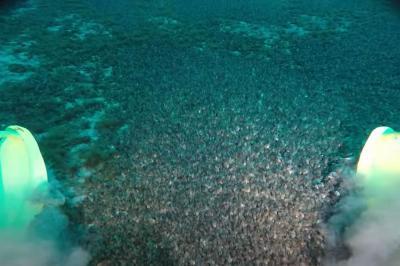
Benthic, or bottom-dwelling, organisms are critical components of Lake Michigan’s food web and are important indicators of ecosystem health. They provide food for native fish such as yellow perch, burbot and lake whitefish in addition to non-native species including round goby, rainbow smelt and alewife. Benthic organisms include amphipods (which are small crustaceans), worms, insect larvae and mollusks such as the invasive Quagga mussel.
On July 12, scientists will use the Research Vessel Lake Guardian as a platform to begin the 2021 Cooperative Science and Monitoring Initiative benthos survey.
During the survey scientists will collect underwater video footage and “grab” samples of the lake bottom sediment. Videos and samples will allow the research team to estimate the abundance of benthic species, with a special emphasis on the distribution of invasive Quagga mussels.
These filter feeders have densely colonized the bottom of Lake Michigan, leading to large-scale ecosystem changes, including increased water clarity, changes to nutrient availability in the lake, and decreases in phytoplankton abundance. This year’s survey results will be compared with past surveys to determine if the benthic community and Quagga mussel abundance and growth have changed since the last Lake Michigan lakewide CSMI benthic survey in 2015.
GLRI partners are conducting this research as a team:
- U.S. Environmental Protection Agency
- National Oceanic and Atmospheric Administration
- Buffalo State College
- Cornell University
- Oak Ridge Institute for Science and Education
This survey is a component of the EPA Great Lakes Biology Monitoring Program, which is funded by the Great Lakes Restoration Initiative.

